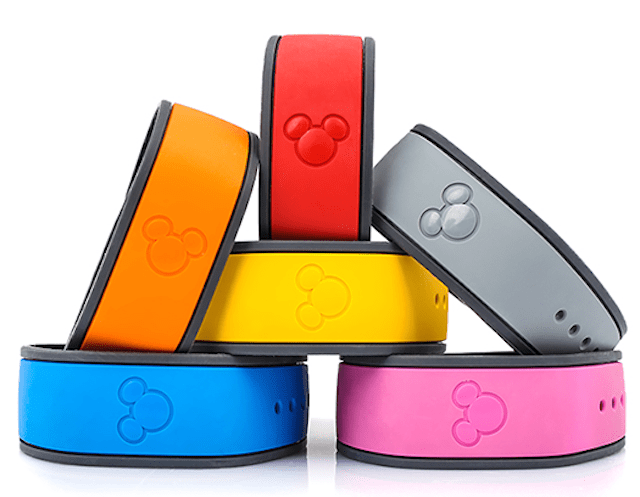

Attrecto team
Brands Building Human Relationships with Customers
During our webinar, Leveraging Data to Drive Increased Personalisation and Empathy, Lili Kunfalvi, Ynsight’s Market Research professional delved into the depths of the human psyche to see how people derive identity from the products they buy and the brands they prefer.
In this blog post, we’re going to go through some of her enlightening points to see just how human-like our relationships with our favorite (or most despised) brands can be!
PRODUCTS PLAY A PSYCHOLOGICAL ROLE
At this point, with Artificial Intelligence sifting through an innumerable amount of data every day, it is common knowledge that companies have at least a decent guess about your preferences about the products they offer.
Taking it a step further, however, we can see that today’s technology and understanding of psychology can also enable brands to guess some of their personality traits based on the consumer goods they buy or use.
They do this while most of us still think in a very practical way about our product purchase and use; I bought that car because it fit into my current budget, I ordered that winter coat for the skiing trip next month, I prefer that type of food because it’s healthy, etc.
But the thing is, even when choosing and settling on these products, we also make these choices based on the kind of identity we’d like to possess or show to the world. It can be a very conscious decision or it can hide beneath the practical thoughts on a subconscious level, however, there’s no doubt about the phenomenon that brands and products help us construct, express, and enhance our identities.
In other words, when we buy or use the products from a particular brand, the associations related to that brand are automatically transferred to us.
For example, when money is not a limiting factor, and someone is ready to buy a new car, he or she can consider a jeep or an elegant city car, like a Mercedes for purchase. The jeep generally exudes an aura of adventurousness; it is built for off-road environments, traditionally masculine features are associated with it, and it implies that its driver is probably going on exciting trips quite often.
On the other hand, the Mercedes looks sleek, elegant, and stylish. When we look at it and see its driver sitting inside, we can easily imagine the person having a remarkable record of successful businesses or career paths. And whether the driver is indeed a successful businessperson or not is kind of irrelevant in this consideration, since what matters is that he or she successfully projects that identity through his or her car.
All in all, the key takeaway here is that we as consumers take up roles and identities using the products we buy. But this is not a static phenomenon. Just because someone buys a Mercedes, it doesn’t mean she’s not adventurous. Once again, putting financial constraints aside, a consumer could go to work in a Mercedes during the week as an elegant businessperson, but on the weekend she hops into a jeep and goes to explore the countryside or drive up mountainous regions.
One additional note to make here is that the connection between our identities and our possessions can sometimes be so strong that an unfortunate loss of such object or possession might feel like a loss of identity as well.
IDENTIFY MANAGEMENT AND CONNECTION WITH CONSUMER PRODUCTS
To better understand which areas can be improved by the inclusion of AI technology, we have to first know what we mean by customer experience and what we can do about it to make it better for our target audience.
CX is the combined interactions and emotions that a customer has in connection with a company. It is the combination of both pain and pleasure when a consumer is using a product or service – or is inquiring about one.
And what we often see (as customers) from what CX is, we usually only perceive (or encounter) the very tip of the iceberg. And in the case of the technology involved, it is mostly the front end of it.
But there’s a lot more to CX below that we don’t see, even when we’re already using the product. Customer service, billing, technical support, account management, logistics, and many more can be found below the surface.
UX is still just one of these elements. It needs to be well planned out and executed, but in no way it is the only determining factor that can result in great CX.
And it’s very important to note that the majority of customer data necessary to discover impactful insights are hidden there, but AI provides the capacity to mine this data and leverage it in the delivery of superior customer experiences.
There are three ways products exert a psychological function over our identity:
- Symbolic self-completion: Consuming products in order to compensate for self-perceived inadequacies in identity.
- Symbolic group membership: Signifying group affiliation, e.g. first-year students buying university merchandise or mascots to show that they belong there, but can be associated with any kind of affiliation (political party, social class, sex/gender).
- Symbolic differentiation: Picking products that reflect the person’s uniqueness.
Brands exploit these symbolic functions in how they portray and advertise their products. They create different associations that will attract specific customers. For instance, one watch brand speaks to more adventurous, young people, another for affluent, elegant individuals that want to show off their wealth through luxurious products, and another that combines a bit of both world: elegant, sleek, but can be worn in any setting.
The key here is that these brands want to portray their products as items that are integral to their consumers’ identity, where each watch symbolizes a different identity.
A brand schema is a set of associations linked to a brand. In other words, they are the mental representation of brands; the qualities, values, and beliefs associated with the brand itself.
They work in the way of attaching highly human attributes to a product and its brand to show how they “behave” in the world. Touchpoints that these attributes are communicated through are varied; from advertisements through scandals to price and logo, it can be virtually anything that tells something about the product or brand.
For instance, when we buy a bottle of Coca Cola, we don’t know the people who produced that or decide on the company policies, but we can glean information about them through the packaging, the quality, the colors, the logo, as well as any news related to them.

HOW DO WE JUDGE BRANDS?
When making our minds up about people, we usually do it by measuring them through two perceptual dimensions: warmth and competence.
And we do the very same in the case of brands. With human-like traits attributed to brands, it becomes easier for our brains to judge those the same way as we measure other people.
So, warmth is connected to the intentions of a person or brand; how trustworthy, kind, generous, helpful, nice do they seem?
And the dimension of competence is their ability to act on these intentions. Subconsciously, we’re assessing a person’s or brand’s strength, status, resources, etc. compared to our qualities.
Interestingly, we use these dimensions to “judge” everything around us, including pets, friends, lovers, family members, strangers, politicians, celebrities, and the list goes on.
And where these dimensions meet, they together stimulate a predictable set of behaviors and emotions, which can also be directed not just towards people (or living beings in general), but concepts like brands as well.
Assessing a brand as warm and competent, triggers emotions of admiration and pride, which makes us attracted or want to be affiliated with a brand. While a cold but competent company brings forth envy and jealousy, which can either lead to the obligatory association or a form of sabotage. For instance, luxury brands often evoke such behaviors in consumers, and in this case, sabotage means talking about the brand as a symbol of affluent, uncaring wealth.
On the other hand, the emotional response of warm incompetence is sympathy and pity, which can make people approach a brand patronizingly. Ultimately, it either transforms into an intention (and action) to help that organization somehow or into social neglect. Many non-profit or international organizations (relief, wildlife protection, etc.), unfortunately, suffer from this brand image.
And lastly, there’s cold incompetence that evokes contempt and disgust in people. They will reject and avoid the products and services of such brands, wanting nothing to do with them.

HOW DO WE ESTABLISH HUMAN RELATIONSHIPS WITH BRANDS?
Just like in the case of any other connections we create over our lives, our relationships with brands are malleable and dynamic. Brands can befriend or offend us, and then they can either do something that will make us forgive them or antagonize us further until our behavior is all about enmity to that particular brand (never doing business with it).
But what’s important to note here is that a brand is not a passive object of marketing transactions, but actually is a contributing member of a relationship dyad, where the brand acts through the actions (or inaction) of the decision-making executives as well as the marketing team communicating those decisions and the brand image itself.
We’ve collected an exciting sample of meaningful relationships a person can have with a brand:
- Casual friendship: Sporadic but pleasant interactions with a brand with a few expectations for reciprocity.
- Arranged marriage: Non-voluntary use of the brand, imposed by the preferences of a third party (e.g. spouse prefers a different coffee brand and we keep buying from that brand).
- Secret affairs: While on a diet we’re supposed to drink only water, but we ‘cheat’ on the diet by sometimes drinking Coca-Cola.
- Flings: Trying out something new for a short-term period (e.g. beauty products offered as gifts in malls).
- Childhood friendships: When we were small children and loved a particular product that we’re not using anymore, however, seeing them again evokes nostalgia.
KEY TAKEAWAYS
In conclusion, Lili presented the key takeaways of her presentation, the premise of which was that customers choose brands that match their ideal identity.
But to create brands that construct, narrate, and enhance their customers’ identities, they need successful targeting to collect relevant psychological data about them: if they have valuable information of their audience’s preferences, personality, attitude, and beliefs, they can draw insight about their needs, motivations, and even desires. Ultimately, it helps cement the brand as a cultural icon by empowering related associations between it and the identity the consumer wants for him or herself.
Lili recommended every participant think about their brand as a person and use social media to strengthen the likeness between brand and person. Last but not least, she had a great piece of advice on how brands can maximize customer loyalty!
Interested to learn this secret? Watch the presentation right here!







